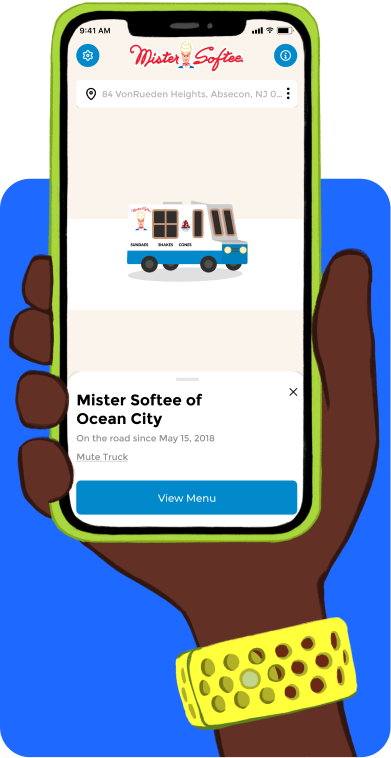In today’s mobile-first world, it’s more important than ever to design user-friendly mobile apps. With these strategies for designing user-friendly mobile apps, you will be ready to do so!
After all, if your app is difficult to use, your customers will simply uninstall it and move on to a competitor’s app. It’s important to keep in mind that competition is fierce in the world of apps.
The good news is that there are a number of strategies you can use to make sure your app is as user-friendly as possible. Keep reading to learn more.
One of the Best Strategies for Designing User-Friendly Mobile Apps? Opt for Intuitive Navigation
Navigation is an essential aspect of any mobile app, and utilizing intuitive navigation strategies can greatly enhance the user experience.
One such strategy is to prominently display a search bar or button, allowing users to easily find specific information or pages within the app.
Another strategy is to utilize frequently used icons for navigation buttons, as these will be more recognizable to users. It’s also important to consider the placement and size of navigation elements, ensuring they are accessible and easy to tap on for users with different hand sizes and dexterity levels.
By taking the time to design user-friendly navigation, you can improve overall satisfaction with your app and encourage repeat usage.
Prioritize Content Over Visual Design
When it comes to designing a mobile app, it’s important to remember that the content should always take precedence over visual design.
Strategies for creating a user-friendly app include:
- Keeping menus and navigation simple
- Ensuring easy access to search functionality
- Utilizing white space effectively
It’s also crucial to prioritize functionality and performance, as a visually appealing but slow-loading or glitchy app will quickly frustrate users.
Of course, this doesn’t mean that visual design should be neglected – an attractive layout and color scheme can enhance the overall user experience.
However, these aesthetic elements should never come at the expense of the app’s content and functionality. Ultimately, prioritizing content in your mobile app design will result in a more successful and enjoyable experience for users.
More About the Importance of Using White Space Correctly
When it comes to designing a user-friendly mobile app, the use of whitespace shouldn’t be overlooked. Whitespace, also known as negative space, is the blank space between design elements on a screen.
This empty space may seem inconsequential, but it can actually have a major impact on the user experience.
By strategically incorporating whitespace, you can make your app feel more organized and visually appealing. Additionally, it can allow important elements to stand out and guide users toward specific actions.
To maximize the effectiveness of whitespace in your mobile app design, try grouping similar elements together and giving each element enough breathing room.
Also, consider how various screen sizes may affect the placement of the whitespace. By using whitespace effectively, you can create a clean and intuitive layout for your mobile app.
Make Sure the Touch Targets Are Large Enough
When designing a mobile app, it is important to consider the user experience. One crucial element of this is ensuring that the touch targets on your app are large enough for users to comfortably use.
Strategies for accomplishing this include increasing the size of buttons and hyperlinks, as well as adding space between them to reduce accidental clicks and taps.
Additionally, consider the varying finger sizes of users and allow room for users with limited dexterity. This can enhance usability for all individuals.
Remember, user satisfaction and ease of use should always be a primary focus in design and development. Overall, designing larger touch targets can improve function and ultimately benefit your business or organization in the long run.
Keep usability in mind when designing your next mobile app, and don’t forget to make those touch targets big enough for all users to easily click or tap.
One of the Key Strategies for Designing User-friendly Mobile Apps Is Making Smart Font Choices
When designing a mobile app, one often overlooked aspect is font choice. You want to choose a font that is easy to read on a small screen while also fitting the overall aesthetic of your app.
One strategy is to stick with standard fonts like Arial or Helvetica, as they are often pre-installed on most devices and won’t require extra downloading time for the user.
Additionally, using a sans-serif font can make the text more legible on a small screen. It’s also important to consider accessibility options such as font size and contrast levels for users with visual impairments.
Not all fonts are appropriate for all apps. Certain fonts, like cursive or highly decorative ones, can be difficult to read on a small screen.
By taking some extra time to make smart font choices, you can create a more user-friendly and enjoyable experience for your app users.
Don’t be afraid to experiment and test out different options before settling on one for your final design. Remember, you want your users to have a seamless experience with your app, and the right font choice can help make that happen.
Keep Different Screen Sizes In Mind
One of the key components of designing a user-friendly mobile app is keeping different screen sizes in mind. Though smartphones have become increasingly uniform in size, there are still hundreds of variations on the market.
Here it is important to consider who your users are and how they will access your device. For example, are you making something for Android or Apple users? Do you want your app to work well across a wide range of devices?
Creating a design that looks and functions well on all devices can be challenging, but there are strategies you can use to make the process easier.
One method is to focus on creating a fluid design that can easily adapt to different screen resolutions. Another option is to create separate designs for each specific screen size, accounting for the nuances of each device.
Ultimately, taking the time to consider diverse screen sizes helps ensure that your app will be accessible and enjoyable for all users.
Final Thoughts on Strategies for Designing User-friendly Mobile Apps
By following these simple design strategies, you can create mobile apps that are both user-friendly and visually appealing.
Remember to put your content first and focus on creating an intuitive navigation system. And when it comes to touch targets, make sure they’re large enough for users to interact with easily.
Everything from how you organize information to your font choice and use of white space will make a big difference!
With a little thought and effort, you can create an app that is not only easy to use but looks great too!
What do you think? Comment below.
Since 2009, we have helped create 400+ next-generation apps for startups, Fortune 500s, growing businesses, and non-profits from around the globe. Think Partner, Not Agency.
Find us on social #MakeItAppn®

















